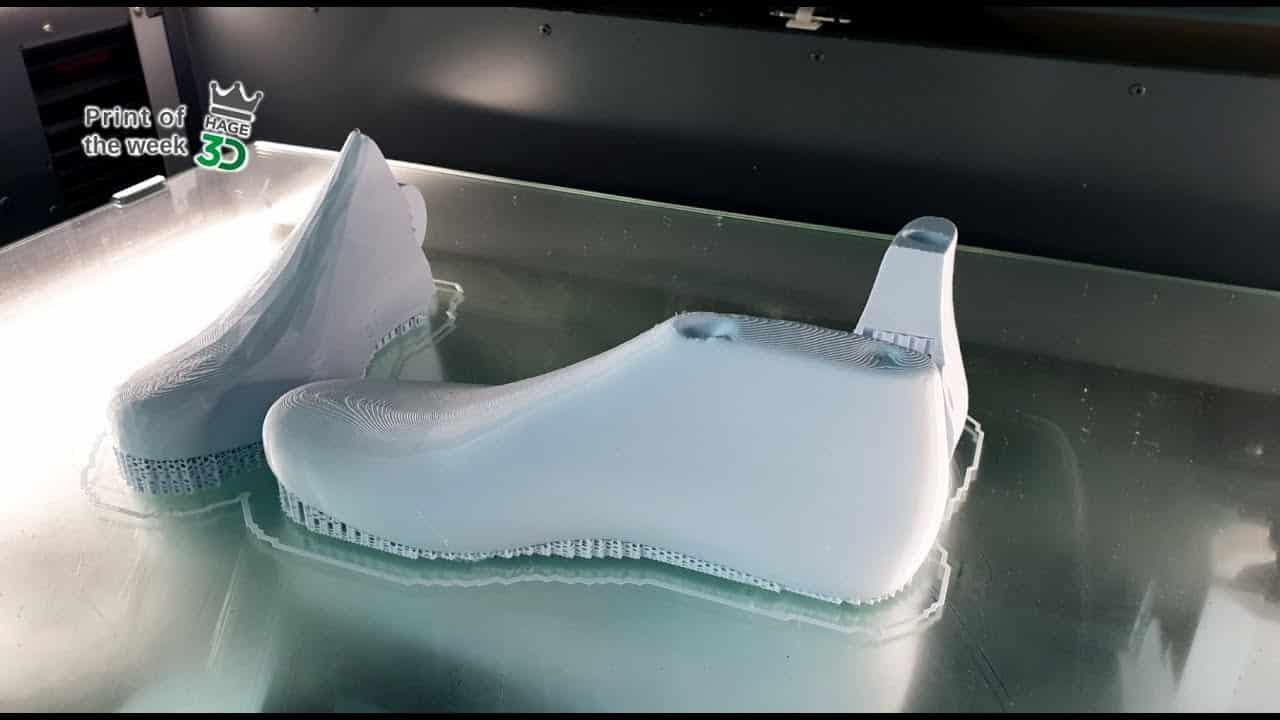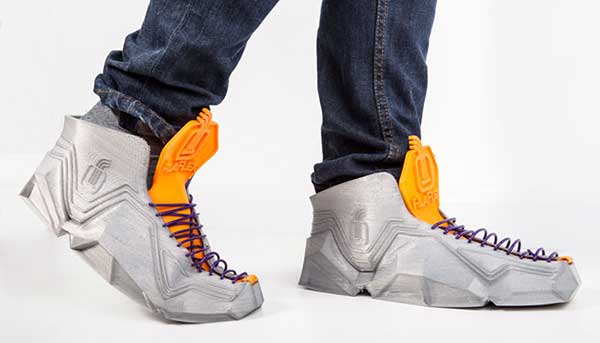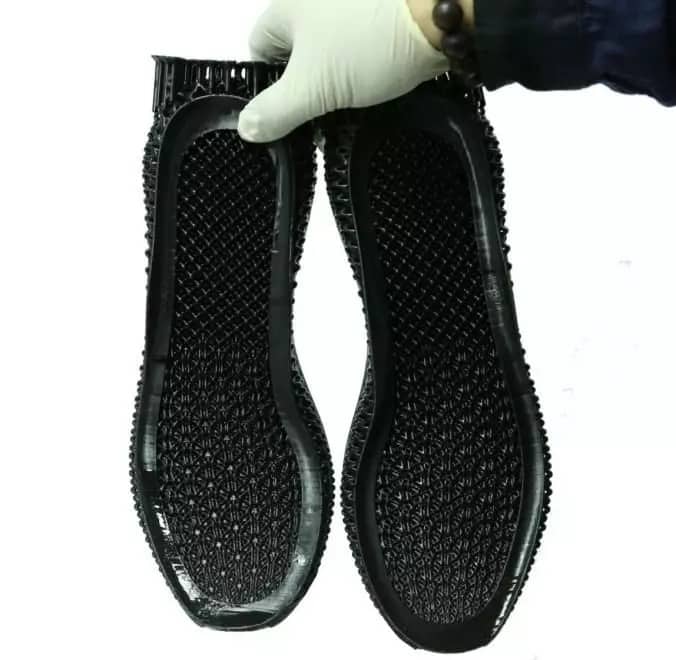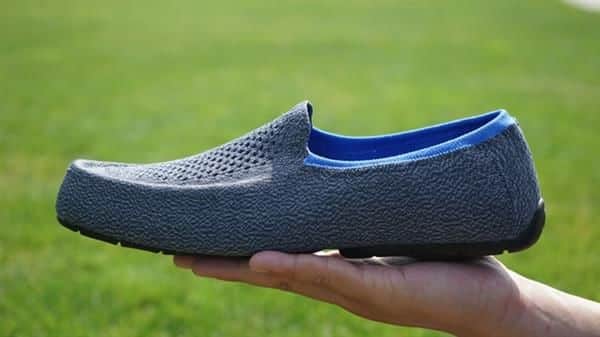3D printing technology is steadily advancing in the footwear industry with its tangible advantages of integrated molding, high efficiency, simple operation, safety, environmental protection, intelligent monitoring and management, and unattended operation. Through 3D printing technology to create user value and improve user experience, we are committed to building connections between “large-scale customization” and “distributed manufacturing” for users in multiple industries, and constantly integrating, creating and evolving new business models.
The application of 3D printing technology in the field of shoemaking
- Replacing the wooden shoe last:
Using 3D printing equipment to directly sand cast a prototype, which is completely printed in 360 degrees. The sand mold can fully substitute the wooden shoe last. It requires shorter lead time, less manpower, and saves materials while offering a wider range of patterns. The manufacturing process is more flexible and efficient. Besides, it reduces noise, dust, and corrosion pollution. - Six-sided die printing:
3D printing technology can directly print the entire six-sided die. No more editing process of tool path, and no tool change, platform rotation, and other operations. Each shoe model data feature is integrated and accurately expressed.
At the same time, the 3D printer can print multiple models with different data specifications at one time, and the printing efficiency is significantly improved. The most efficient mass production printing equipment can achieve an average of 1.5 hours per print, which facilitates designers to evaluate the appearance and design concept of shoe samples, and is suitable for the demonstration of product marketing activities. - Try-on model proofing:
3D printing can provide trial shoes for slippers, boots, and other developed sample shoes before they are officially put into production. Soft-material shoe samples can be printed directly through 3D printing to test the cooperation between the shoe last, the upper and the sole. 3D printing technology can directly print on the try-on mold, effectively shortening the design cycle of shoes.
Why people love 3D printed shoes?
More attractive surface
The high-elastic shoe mold produced by the 3D printer can have very fine patterns and smooth surfaces. Sometimes it does not even need to be polished, which reduces maintenance costs. The physical properties such as bending strength, toughness, hardness, dimensional stability, temperature resistance, compressive strength, are relatively stable. Through the data collection and analysis, 3D printing can realize the same shoe, according to different consumers’ foot shapes, preferences, the required cushioning and support, etc., in a short time for batch personalized customization.
Light-weighted soles
With the development of 3D printing technology, in the future, the modeling procedure will be less time-consuming, the printing materials are more diverse, the printing efficiency is higher, and the production workshop is finally fully intelligent.
At present, most sneaker companies use the technology in making porous and hollowed midsoles, , which helps to make the shoes lightweight, breathable, and suitable for running. Some professional media also points out that 3D printed sports shoes have good shock absorption performance that does not lose to traditional technology, which is an affirmation with the function of 3D printed sports shoes.
Sense of fashion
In addition, those stylish 3D printed shoes, which are also symbols of cutting-edge technology, are favored by sports stars as well as fashion icons. With the celebrity effect, fans are driven to buy the same, and some are even willing to pay a lot to collect one, like the Futurecraft 4D produced by Adidas.
The biggest selling point: Customization
Customization is the biggest selling point of 3D printed sports shoes in the future. All kinds of shoes can be customized based on the user’s personalized choice. In the past experience, we found that even hundreds of dollars are paid for one midsole, the shoes customized by factories still cannot fully meet the needs of athletes under the traditional production process. The biggest advantage of the current 3D printing technology is that it can customize a pair of perfect shoes for everyone, with relatively low costs.
What advantages can 3D printing bring to shoemaking?
Significantly reduce the production cycle
In the past, the production of shoes had to go through design, mold making, and other processes. Mold making usually takes several weeks or months and costs hundreds of dollars. The 3D printer has completely changed this situation.
The shoe samples can be printed through the computer and the connected printer, which greatly reduces the time of R&D and mold making, and the efficiency of shoemaking has been fundamentally improved.
Adidas has said that the traditional shoe model required 12 manual workers, and could be completed in 4-6 weeks. After the introduction of 3D printing technology, only 2 people are needed, and it can be completed within 1-2 days.
Simplify the production process
3D printed shoes adopt the technology of additive manufacturing. The working principle is:
- Firstly, build a three-dimensional model of the shoe in the computer;
- Then, decompose the model into a multi-layer structure;
- Grind the raw materials into powder, melt them and put into the 3D printer, just like placing ink box into the inkjet printer;
- Eject the melted materials from the printing nozzle, and sinter them layer by layer using laser until the shoe is formed.
3D printed shoes reduce the length of the assembly chain, shorten the manufacturing process and cycle, and theoretically can achieve a one-time molding and 100% yield rate.
Reduce manufacturing costs
3D shoemaking simplifies the manufacturing process and manufacturing process, reduces the consumption of raw materials and the number of manufacturing equipment, saves a lot of skill training costs and labor costs, the production efficiency is greatly improved, and the production cost control can be refined to each shoe.
3D shoemaking can meet the diversity and complexity of shoe products, and produce ever-changing shoe shapes. This will break the traditional pricing method and change the way manufacturing costs are calculated.
Environment friendly
In the process of making 3D printed shoes, clean electricity is the most consumed. In the future, 3D printing shoes can be made with very little waste, and even some waste can be reused. The roar of the machines in the shoe factory, the direct discharge of wastewater, the air pollution from chemical agents, and even the fire of the shoe factory will no longer exist. In the future, more environmentally friendly “net-shaped” shoes can be achieved.
Conclusion
The application of 3D printing technology is a technological innovation for the manufacture of sports shoes. Compared with the traditional R&D process, 3D printing technology breaks the limitations in the shape and structure of traditional molds, making the customization of the sneakers more accurate. For athletes, customized shoes can keep the feet in the most comfortable position, reduce the probability of injury during exercise and competition to a large extent.
On the one hand, 3D printing’s powerful shaping ability gives designers more room to play and enhances the freedom of design; on the other hand, 3D printing has the characteristics of fast, accurate, and customization, which cannot be matched by traditional shoe mold manufacturing. The overall cost reduction in shoe design, molding, and production processes also can’t be ignored.





